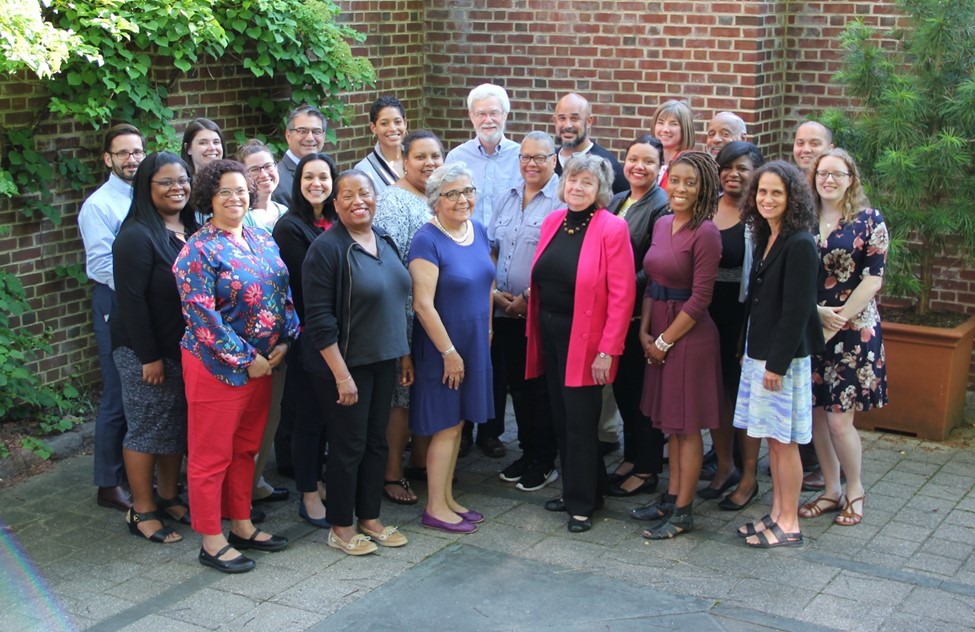Marina Ramirez-Alvarado, outgoing chair of the Committee for Inclusion and Diversity, reflects on her time with the committee.
I remember checking my email while on study section in Washington DC in early February of 2016. The email was from Suzanne Scarlata, Biophysical Society president at the time. She was asking me to chair the Committee for Inclusion and Diversity (CID, formerly known as Minority Affairs committee or MAC). I had been an active member of the Committee for Professional Opportunities for Women (CPOW) since 2014. Since I became an active member of BPS, I had attended events organized by CID; I knew some CID members; but was not a member of the committee. Suzanne Scarlata’s request was that I lead CID in the way CPOW was being led by Gabriela Popescu. I took a day to think about it and accepted her request.
It was a bit intimidating to show up at the CID meeting during the BPS Annual Meeting in Los Angeles a month later. The outgoing chair was unable to come, the committee did not know me, I had not come from within the ranks… Anyway, here I was, and I had every intention to listen, learn from them, meet them, and connect.
The first order of business was brought up by Ro Kampman, then the executive officer of BPS. She shared the call for letters of intent for the NSF program INCLUDES aiming to broaden the participation of underrepresented communities in STEM. The deadline for the letter of intent was 5 weeks after the Annual Meeting. This program was in line with a dream that CID members and other MAC committees in sister scientific societies had for years: to create a “super MAC” where programs and initiatives would be shared and launched together as an alliance of societies, instead of having to reinvent the wheel.
A former member of BPS CID, Luis Marky, somebody I had known since my PhD student days, had shared his passion for the super MAC dream with me. The problem to realize this dream: the money! Or as we say in Mexico: la lana, por que si no nadie teje!
Here I want to introduce one of my dear friends, colleague, and mentor: Rick McGee. I met Rick when he was associate dean of student affairs at Mayo Clinic, and I was a fresh assistant professor at Mayo Clinic in 2002. For those of you who do not know Rick, he is an innovator and a champion for diversity. He invented the now national postbaccalaureate program called PREP at the Mayo Clinic and convinced NIH to fund it! I have worked with Rick on several other initiatives that he has created, and they are all successful and innovative.
As I went home and tried to put together this letter of intent with the dream of a super MAC, I reached out to Rick. He introduced me to many scientific societies and helped this letter of intent take shape. His help was essential to get the letter of intent and the founding societies enrolled in our idea. We were selected to write the full grant, but we unfortunately didn’t get it (and we disagreed with the reviewers’ comments of course 😊).
Months after getting those disappointing comments, I received an email from Veronica Segarra, then co-chair of the American Society of Cell Biology MAC. Her committee has a successful track record of grant funding and good relationships with program officers. During their annual meeting, they had talked to a program officer at NSF who was interested in funding our proposal outside of the INCLUDES program. This was the best news we could hear! Very quickly, we put the team back together and planned to revise the proposal. We had a conference call while I attended the BPS Annual Meeting in 2017 between Veronica Segarra, the NSF program officer and me, where we got instructions on how to revise the INCLUDES initial proposal to make it successful. This was the birth of ACCESS.

In the meantime, we were having some great initiatives with CID. For example, there was a greater emphasis on making meetings more inclusive for our LGBTQ+ community, and we initiated conversations about bathroom labels and use that were being discussed in the news at that time. We were coordinating with other committees (Early Careers and CPOW) to join forces and organize events during the Annual Meeting together. We started recruiting more members (particularly more students and postdocs).
In 2017, Biophysical Society developed a 5-year strategic planning and one of their basic values became Diversity, Equity, and Inclusion. The definition of a diverse membership goes beyond race and ethnicity. We started learning a lot about inclusion and accessibility. Daryl Eggers, a dear friend and colleague who was later appointed vice-chair of CID taught me a lot about these concepts.
I will be remiss if I do not mention the years of intermittent absences in my CID leadership (from 2018-2021) and the incredible support that I have received from Daryl Eggers, Laura Phelan, Elizabeth Vuong, past and present members of CID, and everyone else at Biophysical Society.
From the NSF Alliance and ACCESS work with Veronica Segarra, I am forever grateful that Veronica Segarra kept the project going during the times I was too ill to work. We invited Candice Etson to help us out and Candice and Veronica have partnered together and made ACCESS a success!